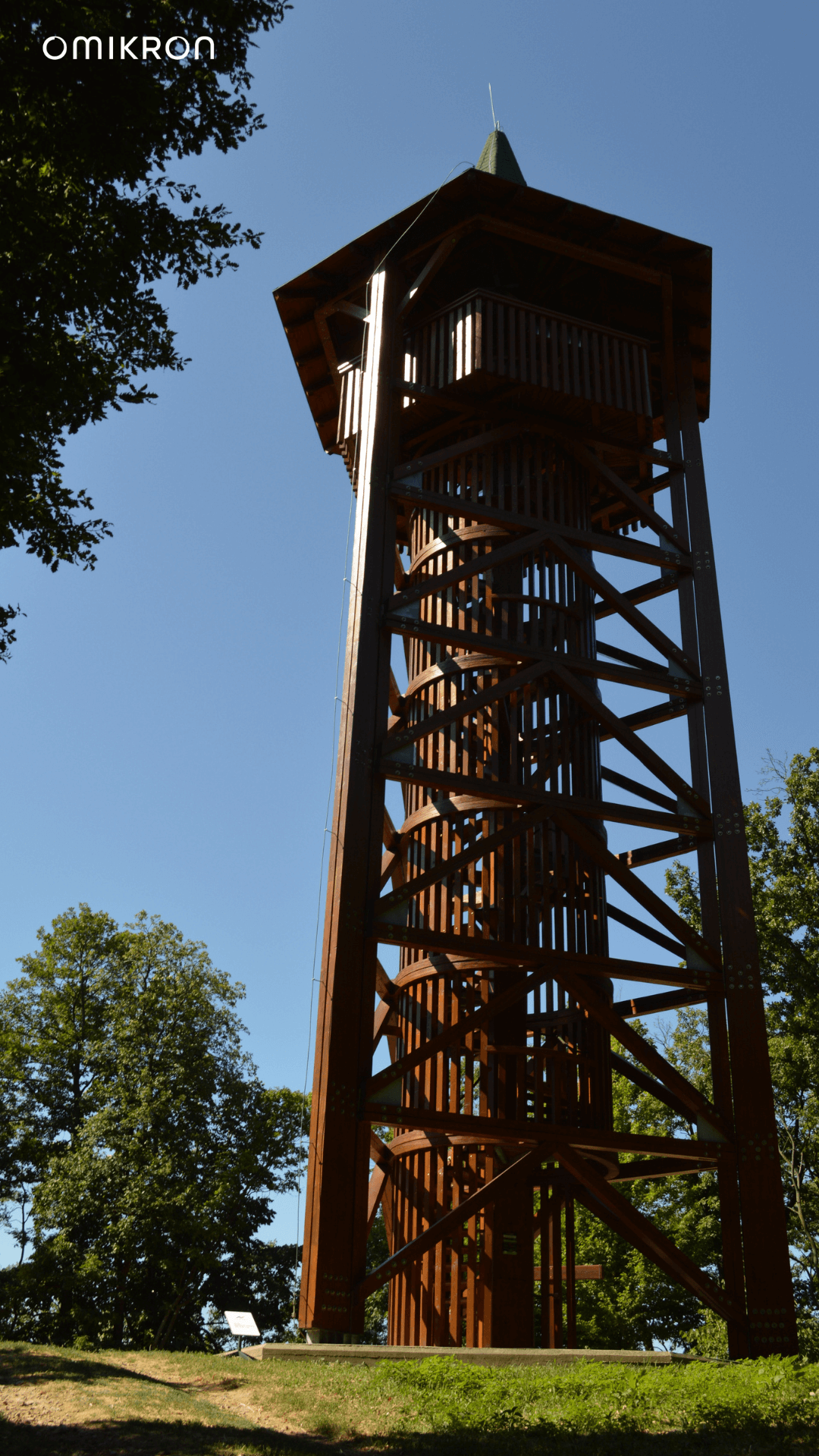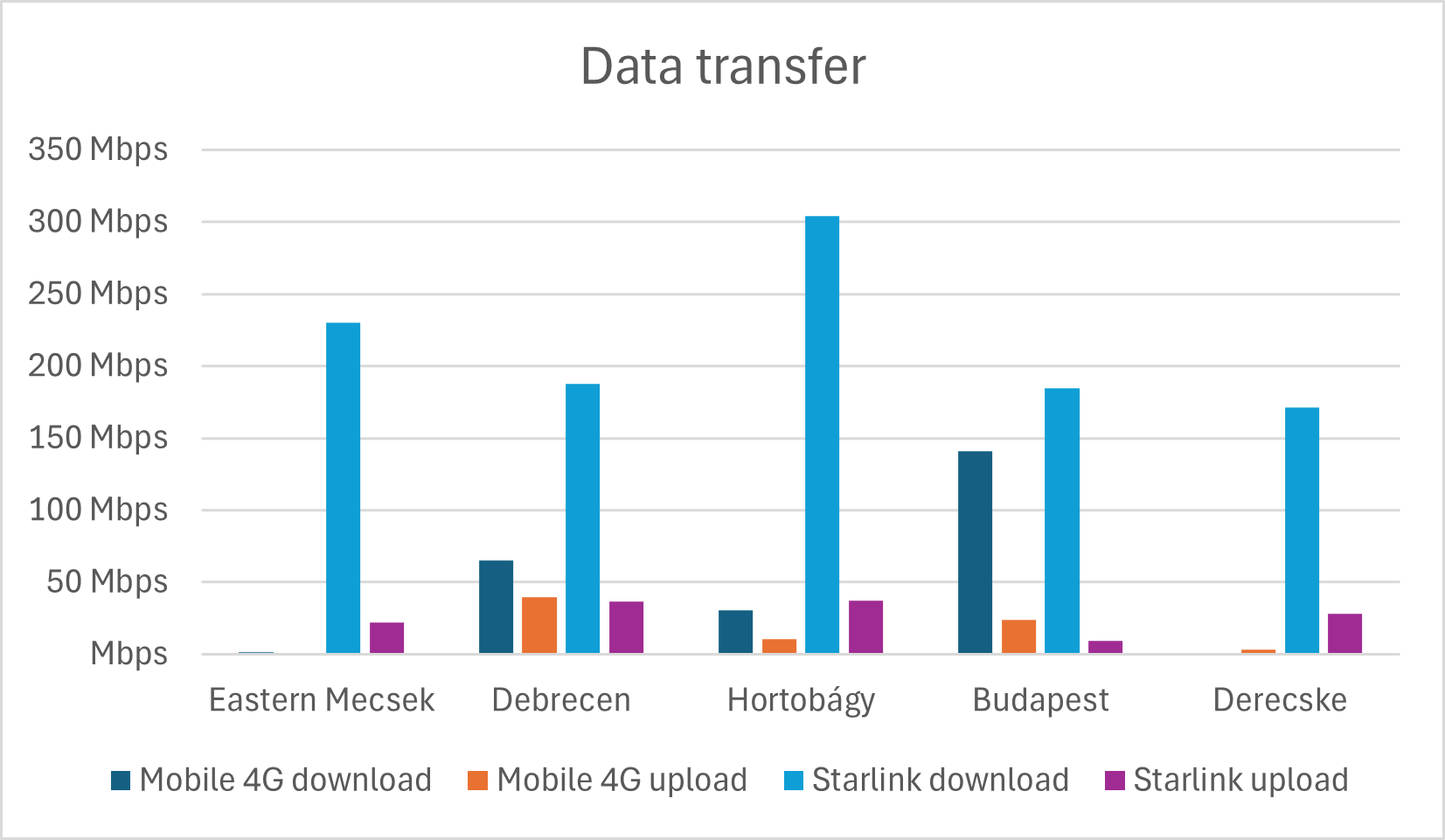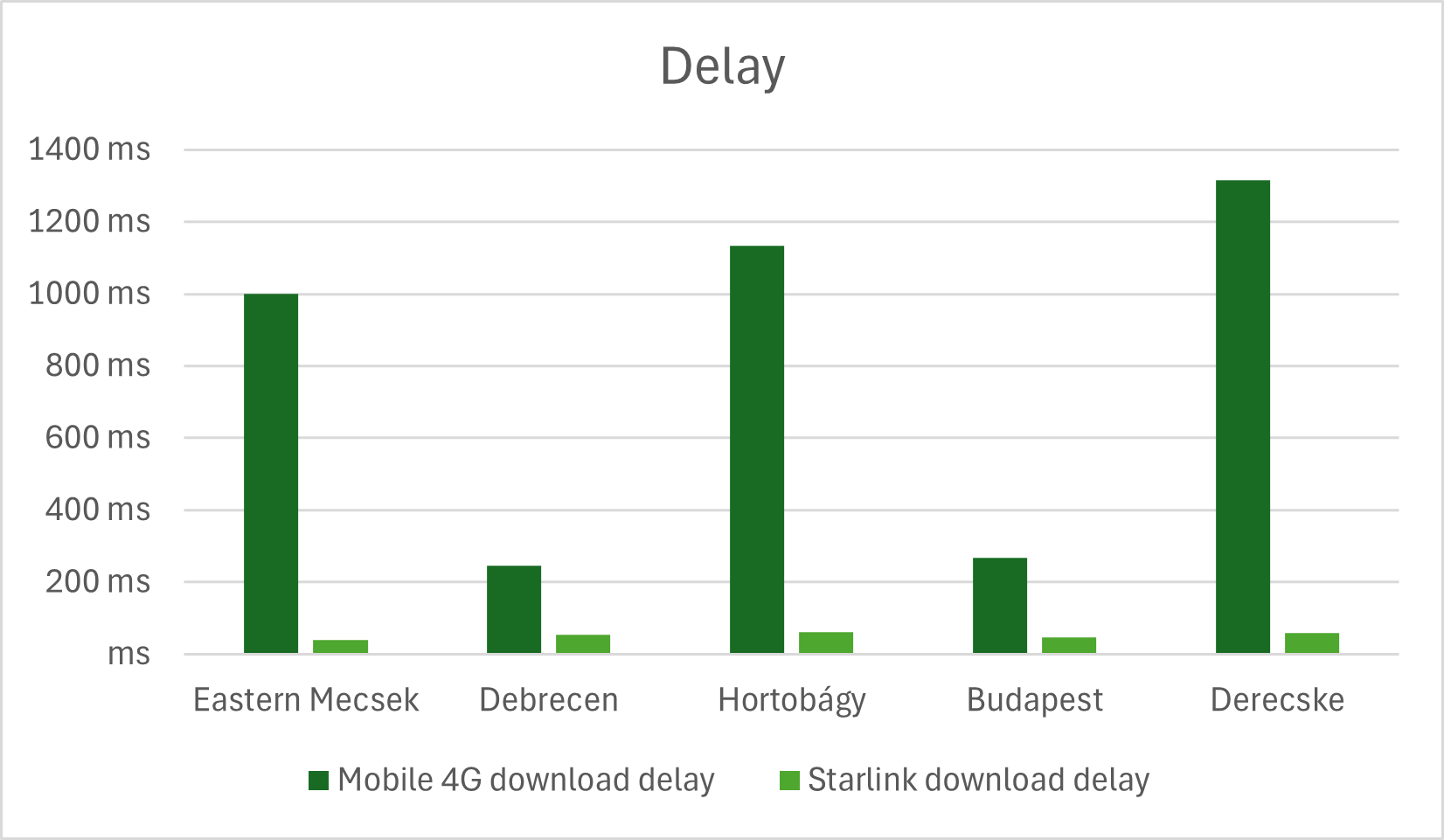Setting up a Wi-Fi network in a protected heritage site? Providing in IT infrastructure for monitoring waterfowl breeding? Establishing a stable internet connection in remote forest hotels? During our designs, we often encounter specific needs but we do everything we can to provide innovative solutions.
As engineers, testing is just as important to us as creating designs. In our latest test, we examined the performance and potential of the Starlink service, now available in Hungary, and compared it with the countrywide 4G coverage and availability.
The Starlink service test was provided by our strategic partner, VANNET Telekommunikációs Kft, the official reseller in Hungary.
What is Starlink?
Starlink is associated with SpaceX and Elon Musk. Launched in 2020, this satellite internet service aims to provide stable internet access in hard-to-reach or infrastructure-poor areas. So, what’s new about it?
The satellites orbit at a lower altitude than traditional satellites, called Low Earth Orbit (LEO). This lower orbit allows for faster data transmission and lower latency compared to traditional satellite connections.
Currently, with around 6,300 satellites in operation, it can already provide speeds of 100-200 Mbps or more. As more satellites are launched, coverage will become more stable and predictable, and available bandwidth will increase with latency similar to wired connections (20-60 ms).
In Hungary, Starlink has just become available for business clients. Our partner, Vannet Telekommunikációs Kft., provided us with a receiver unit for a full week so we could test it nationwide.
How did we perform the tests?
Equipment:
We received a second-generation, fixed installation device package for the tests. Besides the antenna and cabling, the package included a Wi-Fi-enabled central unit and an Ethernet module. The Wi-Fi router in the test package was a basic Wi-Fi 5 device, but for more refined, professional setups, we recommend integration through the Ethernet module. We determined the antenna’s position using the Starlink app, available for free on our phones, which also controls and configures the device. We conducted the 4G tests which served as the comparison baseline using our phone (iPhone 13). Since Starlink’s power consumption is relatively low (78-80W in normal operation), we powered it with a car inverter during countryside trips.
Locations:
We tested Starlink in various locations.
We first took it to the heart of Budapest, the densely populated 8th district.


Then, we conducted measurements next to the iconic Nine-Hole Bridge in Hortobágy.


We also tested it in a remote corner of Eastern Mecsek, at Kövestető.


The small clearing accessible from Kövestető bus stop is surrounded by Hármas-hegy (603 m), Kerék-hegy (531 m) and Kövestető (463 m). The forest offers a campsite, a lookout tower, a restaurant, and a forest hotel for those looking to relax. However, what is refreshing to the soul can also be particularly disadvantageous for mobile internet connectivity: our 4G measurements with a mobile phone showed download speeds of only 1.6 Mbps, upload speeds of 0.8 Mbps and latency of 1000-1500 ms*. In contrast, Starlink provided stable speeds of 230 Mbps / 22 Mbps, with latency between 40-60 ms.
*Download latency: measured during the download test to determine how the network affects download speed.


Conclusion
Like any technology, Starlink has its pros and cons, and our test week was enough to experience both firsthand.
It can certainly be said that Starlink fulfills its original purpose excellently: it provides a stable internet connection in hard-to-reach or infrastructure-poor areas. Moreover, its receiver unit is easy and quick to set up, which is another advantage.
However, there are also drawbacks. While it’s inherent to the technology, it’s worth mentioning that the antenna must have an unobstructed view of the satellites. Therefore, it’s recommended to place it at a higher location to avoid interference from obstacles. Another interesting point is that during testing, the antenna positioned itself northward, thus making clear visibility in that direction is especially important. Surprisingly, clouds didn’t significantly affect the connection quality, which is a positive, though we couldn’t test it in heavily cloudy, stormy or windy conditions.
Another drawback is that the business packages are quota-based: prioritized traffic is only guaranteed up to a certain amount of data. Exceeding the quota results not only in losing traffic prioritization but also in receiving a CGNAT (Carrier-Grade NAT) IP address instead of a public one, which could cause problems in certain cases.
From an engineering perspective, we still believe Starlink is a great solution in cases where traditional internet access is not available or difficult to implement or when continuous access is a strict requirement. We’re eagerly looking forward to the opportunity to design and build a network together using this technology!

